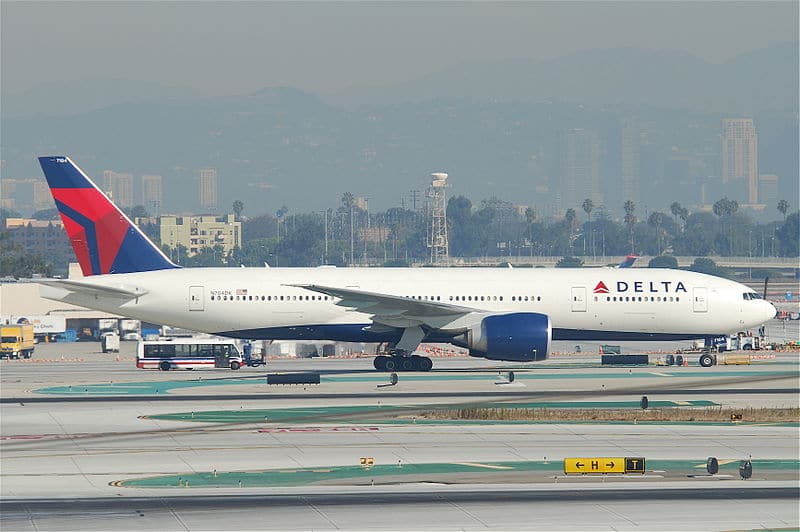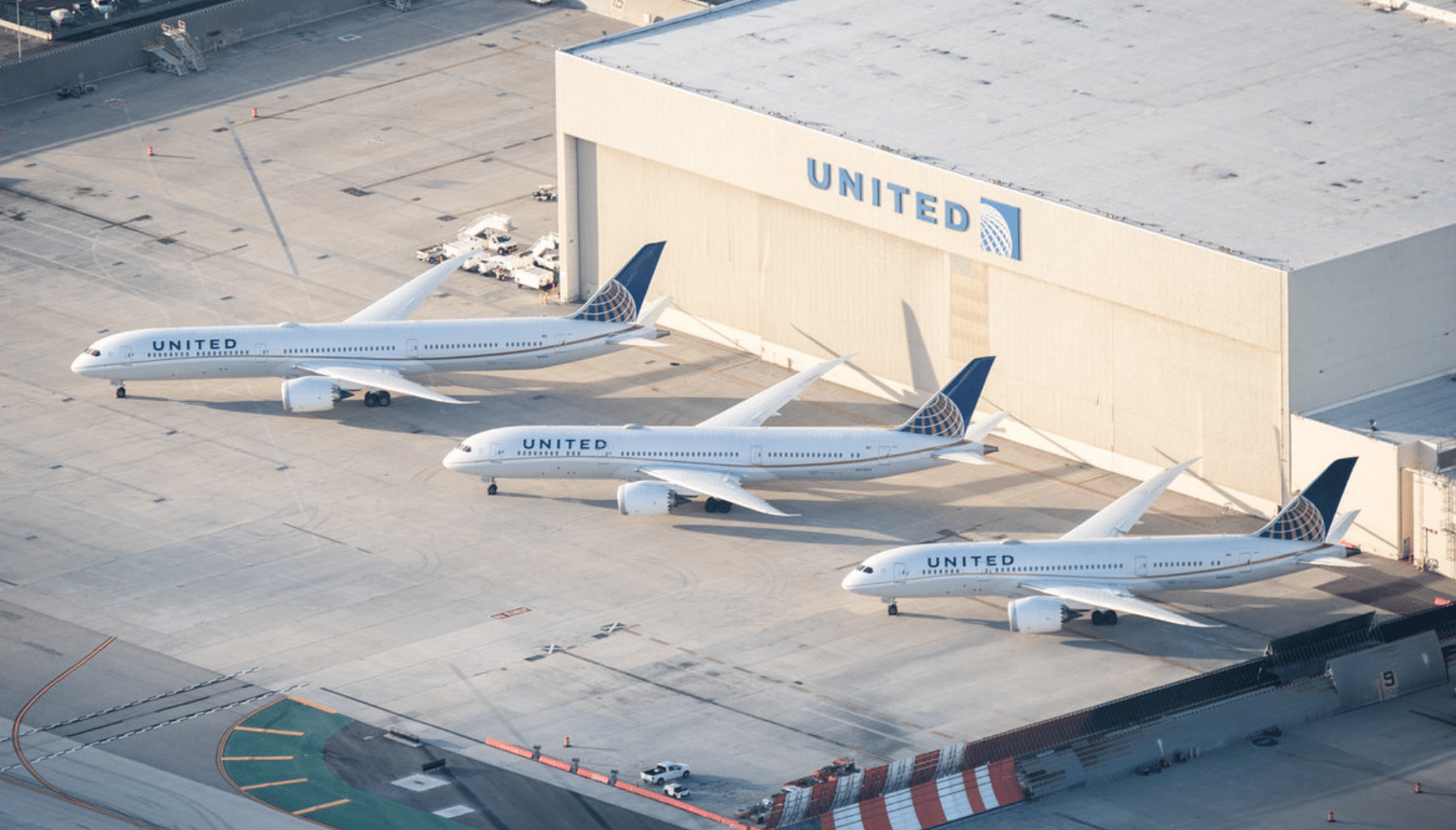United has presented a proposal maximized to meet consumer demand and benefit U.S. travelers. Together, the flights from five U.S. mainland hub cities and Guam will connect Tokyo Haneda with 112 U.S. airports, representing approximately two thirds of U.S.-Tokyo demand, or more than three million annual Tokyo bookings. With United’s proposed routes representing five of the six largest metropolitan areas in the U.S. mainland and a combined population of nearly 56 million, the new flights requested in this proceeding will provide consumers with more choices and more convenient options when selecting Tokyo Haneda for their travel plans.
“If awarded by the DOT, these new nonstop flights would expand United’s best-in-class Japan route network to better meet demand from U.S. consumers and businesses,” said United Airlines President Scott Kirby. “Tokyo is a hub of 21st century global commerce and innovation and one of the world’s most popular tourist destinations. Today’s filing demonstrates United’s unparalleled commitment to helping more Americans travel between our nation and Japan’s capital city. Our proposed flights to Tokyo Haneda will offer an unrivaled experience and maximize choice and convenience for our customers traveling between the United States and Tokyo for the Olympic Games Tokyo 2020 and beyond.”
United’s proposed daily flights from Newark/New York, Los Angeles and Guam would supplement the airline’s existing daily flights between those hubs and Tokyo’s Narita International Airport (NRT), while United would shift existing daily nonstop Chicago, Washington D.C. and Houston flights from Tokyo Narita to Tokyo Haneda.
United’s application will also support American businesses and help grow the U.S. economy by offering direct flights from key business, government and cultural hubs where demand for flights to Haneda, the closest airport to central Tokyo, is the highest. With these new flights in place, United would provide Haneda service from:
- The largest market for travel demand between the U.S. mainland and Tokyo (Los Angeles);
- The two largest markets for travel demand between the East Coast and Tokyo (Newark/New York and Washington, D.C.);
- The two largest markets for travel demand between the central U.S. and Tokyo (Chicago and Houston); and
- Guam, a market with significant travel demand from a Japanese tourist base that is critical to the island’s tourism industry, economy and job market.
United’s proposal would help realize the full potential of these new routes for U.S. consumers and businesses by expanding United’s broad-based and end-to-end network between the United States and Japan. United’s proposed flights to Haneda would allow U.S. consumers to make connections to 37 points in Japan via United’s joint venture partner All Nippon Airways (ANA), strengthening United’s existing comprehensive network when combined with nonstop or single-connection service from 112 U.S. airports.
United has proven its long-term commitment to Tokyo as a key gateway in Asia, serving Tokyo from 100 percent of its U.S. hubs. United also serves 31 markets in the Asia/Pacific region, more than any other U.S. carrier, and has successfully launched 11 new nonstop flights from the U.S. mainland to destinations throughout the Asia/Pacific region since 2014.
United’s application is in response to the U.S. DOT instituting a competitive route proceeding to allocate slot pairs, with today’s application filed under DOT proceeding # DOT-OST-2019-0014. For more information about United’s bid, please visit UnitedToHaneda.com.
American Airlines today will submit an application to the U.S. Department of Transportation to operate additional service to Tokyo Haneda (HND) from Dallas/Fort Worth (DFW), Los Angeles (LAX) and Las Vegas (LAS). American’s application is a result of the U.S. and Japan reaching a tentative agreement last month to expand access at HND, which would open up to 12 additional daytime slot pairs for U.S. carrier operations.
“Tokyo is an important hub for our Pacific Joint Business with Japan Airlines,” said American Airlines President Robert Isom. “Enhanced service at Haneda would give our customers better access to downtown Tokyo and open up JAL’s domestic network with flights to destinations like Osaka, Sapporo and Fukuoka.”
American’s trans-Pacific gateways
American currently operates one daily flight between LAX and HND, which began in 2016. An additional flight from LAX would provide American’s customers with even more options and a convenient schedule between Tokyo and the airline’s West Coast hub. Additionally, DFW, American’s largest hub, serves as an important gateway to Asia with proven local and connecting traffic. With two daily flights, customers traveling from Haneda to DFW would be able to connect to and from more than 800 daily flights and more than 200 destinations throughout American’s vast network.
Betting on Vegas
Las Vegas is one of the largest unserved U.S. markets for Japanese travelers. In January, American, together with JAL, operated a special nonstop flight between Tokyo Narita (NRT) and LAS around CES® 2019. Nonstop service was available Jan. 4–14 on American’s state-of-the-art Boeing 787-8.
Proposed summer 2020 schedule
| Route | Departure Time | Arrival Time | Aircraft |
|---|---|---|---|
| DFW–HND | 12:35 p.m. | 3:55 p.m. | 777-200 |
| DFW–HND | 3 p.m. | 6:30 p.m. | 777-200 |
| LAS–HND | 1:30 p.m. | 5:25 p.m. | 787-8 |
| LAX–HND | 12:40 a.m. | 4:45 a.m. | 787-8 |
Pacific Joint Business
American’s proposed Haneda service would be operated as part of the airline’s Pacific Joint Business with JAL. The Pacific Joint Business was established in 2011 and covers travel among 11 countries in Asia and North America. It allows the two airlines to coordinate schedules, network and service to give more than 3.1 million annual customers access to up to 23 daily trans-Pacific flights from 15 gateway cities in Asia and North America.

Delta proposes flights between Haneda, Tokyo’s city airport, and 5 new U.S. cities
Delta today filed an application with the U.S. Department of Transportation to launch daily daytime service between Tokyo-Haneda airport and Seattle, Detroit, Atlanta, and Portland, Ore., as well as twice-daily service between Haneda and Honolulu.
Delta’s proposed routes would be the only direct service currently offered by U.S. carriers between Haneda, Tokyo’s preferred airport for business travelers and the closest to the city center, and the communities of Seattle, Portland, Atlanta and Detroit.
Together with the carrier’s existing service to Haneda from Minneapolis/St. Paul and Los Angeles, these new routes would bring Delta’s proven operational reliability and exceptional service to more customers traveling between a broad network of U.S. cities and Tokyo’s preferred airport.
Additionally, Delta’s proposal provides a competitive and comprehensive alternative for consumers to the service offered by other U.S. carriers and their Japanese joint venture partners, ANA and JAL.
Delta’s existing service to Haneda from Minneapolis/St. Paul and Los Angeles has already delivered substantial consumer benefits, including transporting over 800,000 passengers since the inauguration of daytime flights. The airline’s proposal for additional service would:
- Provide more attractive flight times for customers arriving and departing Haneda while enhancing connecting opportunities in the Pacific Northwest, Southeast, and Northeast;
- Facilitate the development of trade and tourism between five of the largest U.S. metropolitan areas and Tokyo;
- Serve a geographically diverse set of markets and communities through the comprehensive route networks offered at each of Delta’s hub gateways;
- Provide additional capacity and greater convenience for the large business communities in all of these proposed gateways.
Delta plans to operate the flights using the following aircraft types:
- SEA-HND would be operated using Delta’s newest international widebody aircraft, the Airbus A330-900neo. Delta’s A330-900neo will feature all four branded seat products – Delta One Suites, Delta Premium Select, Delta Comfort+ and Main Cabin – giving customers more choice than ever before.
- DTW- HND would be operated using Delta’s flagship Airbus A350-900 aircraft, the launch fleet type for Delta’s award-winning Delta One Suite.
- ATL- HND would be flown using Delta’s refreshed Boeing 777-200ER, featuring Delta One Suites, the new Delta Premium Select cabin and the widest Main Cabin seats of Delta’s international fleet.
- PDX- HND would be flown using Delta’s Airbus A330-200 aircraft, which features 34 lie-flat seats with direct-aisle access in Delta One, 32 in Delta Comfort+ and 168 seats in the Main Cabin.
- HNL-HND would be operated twice daily using Delta’s Boeing 767-300ER. This fleet type is currently being retrofitted with a new cabin interior and inflight entertainment system.
All seats on these aircraft types offer personal inflight entertainment, ample overhead bin space and free inflight messaging. All cabins of service include complimentary meals, snacks and beverages in addition to Delta’s award-winning operational reliability and service.
Delta has served the U.S. to Japan market for over 70 years, and today offers seven daily departures from Tokyo with connections to over 150 destinations across the U.S and Latin America. The airline will launch new service in April between Seattle and Osaka in partnership with Korean Air. Additionally, last year, Delta began partnering with Michelin consulting chef Norio Ueno to create meals for all cabins of service for flights to and from Japan.
Pending government approvals, the new routes would launch with the summer 2020 flying schedule.





